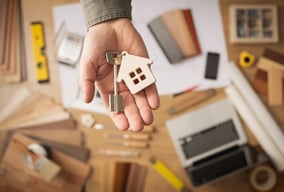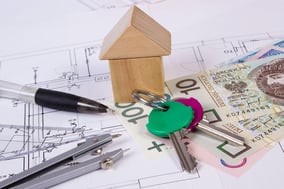How To Price Your Home When Selling
When it comes to selling your home, price is one of the most important factors in your success. While everyone would love to get the most for their home, it is important as a seller to distinguish reality from fantasy when it comes to your home’s market value. A well priced home is much more likely to sell quickly and may even end up getting you more money than if it is overpriced to begin with. At the same time, you want to make sure that you aren’t leaving money on the table. The paragraphs below outlines the ideal realtor pricing strategy to pricing a home correctly and how to price your home to sell for top dollar.
Reality vs. Fantasy
Even before you consider selling your home, you probably have a number in mind that you think your home is worth or what you would like to get for the home. Unfortunately, this amount doesn’t always align with the current market values in your area. This gap in value is what we are referring to when we say “reality vs. fantasy”. When pricing a home, you want to look at the “reality”. These are properties that are comparable (in size and condition) to your home that have sold within the last 3-6 months,( the key point here being that they have sold). On the flip side, you can look at the active properties and see what the “fantasy” is. The reason that we say the active listings are “fantasy” is because they are listed at the price the seller would like to get. You can list a home at whatever price you would like, but there is no guarantee that it will ever sell for that amount. Once the home does sell, the sales price becomes the “reality”.
If speed is a priority. Check out our latest article on How to Sell your Home Fast.
Comparable Properties
You may have noticed in the previous paragraph that we asked you to compare your home to other “comparable” properties that have sold. So what makes a property “comparable”?
The first factor, and the most important, is location. No other features influence a property’s value more than location. When analyzing the value of your home, you want to find properties that are within half a mile to one mile of your address. The closer it is to the subject property, the more accurate the information.
The second important factor is size. Although the number of bedrooms and bathrooms does play a role in the value of your home, the most reliable way to compare properties to one another is based on the square footage of the home. As licensed agents, when evaluating a property's value, we will look for homes that fall within ±20% of the subject properties size. For example, if we are evaluating a 1,000 sq. ft. home, we would consider homes in the 800 - 1,200 sq. ft. range. The reason that square footage is a more reliable measurement than bedroom and bathroom count is because there is no standard size for a bedroom or bathroom. You may have a 1,500 sq. ft. home with 5 bedrooms and 3 baths, but in most cases, a home in the same area that is 1,800 sq. ft. with 4 bedrooms and 2.5 baths will be worth more.
The next factor to consider when comparing your home to others is the home’s current condition and finishes. To accurately gauge the value of your home, you want to not only make sure you are comparing homes that are of similar size and in your area, but also what the home is like on the inside and outside. If your home has been very well maintained or has had some recent upgrades, you will want to compare it to other homes that are in nice condition or may have been recently flipped. However, it is important to be realistic with yourself. If your home could use some work, make sure that you are comparing it to other properties that need fixing, as well.
Evaluating The Properties
After you have gathered the comparable properties to your home, you can begin to evaluate your home’s value. With each property, look at how much the home sold for and how its features compare to your home. If the other home has a nicer feature than your home, subtract the estimated value from your home’s price. Likewise, if your home has features that are considered to be better than the comparables, you can add the value to your home’s estimated price. Using this method with three to five comparable properties in your area should give you a very good idea of the value of your home.
View Your Home From The Buyer’s Perspective
When pricing your home, it is important to keep the potential buyer’s perspective in mind. What value does a buyer get from your home and why is it a better value than other available properties in your area? Most homebuyers view multiple properties before submitting offers. These buyers are viewing each property and, whether in their head or on paper, they are determining the properties value for their needs. If there are 2 similar properties listed and one is $50,000 more than the other, you can bet that the lower priced home will see much more activity and sell faster.
Benefits Of Pricing Your Home Correctly
Using this advice and pricing your home correctly will help you to sell your home faster. A well priced home in a healthy market will typically see a lot of activity when it is first listed. You should expect offers within the first 30 days and you may even receive multiple offers that can bid the price up over ask. Comparing this pricing strategy with setting a high, “fantasy” price, you will typically see homes sit on the market much longer than others and may require multiple price drops before receiving an offer. Homes that sit on the market for a long time eventually “cool off” and will see a drop in activity after the first few weeks. If the home continues to sit, it may get a bit of a stigma attached to it, with buyers wondering what may be wrong with the property because it has been on the market for so long. You may see investor offers come in that are substantially lower than asking price in the hopes they can snag a deal from a motivated seller. Also, having your home on the market longer is a major inconvenience to a seller, especially if it is owner-occupied. Keeping your home clean and having to be flexible for showings can be a headache if it goes on for too long.
These are the steps that are important to take when you are preparing to put your home on the market. A licensed real estate agent can help you to correctly value your home and to break it down for you, but it is also something that you can also do yourself. It is important that you have accurate data, though. Sites such as Zillow and Trulia, while helpful, can sometimes be misleading if the information is out of date or incorrect.
If you are considering selling your home and live in the San Diego area, we would be happy to help you determine the current market value of your home. Reach out to us today!
The above real estate information on How to Price Your Home When Selling was provided by John and Melissa Steele. John and Melissa can be reached at steelesandiegohomes@gmail.com or by phone at 619-887-4429.
Considering buying or selling a home? John and Melissa of Steele San Diego Homes have a passion for Real Estate and would love to share their expertise with you!
Steele San Diego Homes services all of San Diego county and also works with out of area clients to connect them with a strong local agent. Whether you’re interested in buying, selling, investing, or just want to learn more, John and Melissa Steele are here to help you.






